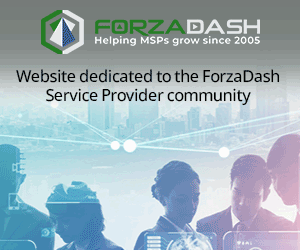The recent hurricanes have left a significant mark on both the tech industry and Managed Service Providers (MSPs). From service disruptions to data loss, MSPs have faced immense challenges. These natural disasters serve as stark reminders of the importance of robust disaster preparedness. Here are five key takeaways for MSPs on how to better navigate and mitigate the impacts of hurricanes and other natural disasters.
1. Business Continuity Planning is Essential
For MSPs, a comprehensive Business Continuity Plan (BCP) is no longer optional—it’s a necessity. Recent hurricanes have shown how crucial it is for MSPs to prepare for unexpected disruptions. A well-crafted BCP should include detailed strategies for maintaining services during outages, steps for relocating data, and protocols for resuming operations quickly after the storm has passed. Additionally, remote work solutions for your team and clients should be a core part of this planning.
2. Cloud Backup Solutions Mitigate Data Loss
Hurricanes can cause power outages, server failures, and even physical damage to hardware. For MSPs, ensuring that client data is stored safely in the cloud is critical. Recent storms have reinforced the importance of regularly scheduled backups to cloud services, which can protect sensitive client information from being lost due to local server damage. Cloud solutions also allow for quicker recovery and access to critical data, even if physical infrastructures are damaged.
3. Remote Monitoring and Management (RMM) Tools Prove Their Worth
During hurricanes, access to on-site locations may be impossible due to safety concerns. MSPs that rely heavily on Remote Monitoring and Management (RMM) tools have seen firsthand the benefits these solutions provide. By using RMM platforms, MSPs can monitor their clients’ systems remotely, provide troubleshooting, and ensure continuity without having to physically be on-site. This also allows for faster identification of issues and ensures swift response times.
4. Cybersecurity Threats Increase During Disasters
Hurricanes and other natural disasters are often followed by increased cyber threats, as cybercriminals take advantage of chaos and weakened infrastructures. MSPs must be extra vigilant during such times, ensuring that cybersecurity protocols are reinforced. From phishing attacks targeting disaster relief efforts to ransomware that exploits vulnerable systems, MSPs need to enhance their defenses, provide immediate security updates, and educate clients on how to spot potential threats during these periods.
5. Client Communication is Critical During Crises
One of the biggest lessons MSPs have learned during recent hurricanes is the importance of transparent and proactive communication with clients. Keeping clients informed about potential disruptions, timelines for service restoration, and data recovery efforts is crucial. By maintaining open lines of communication, MSPs can reduce client stress, manage expectations, and build trust, even during a crisis.
Recent hurricanes have underscored the need for MSPs to have robust disaster preparedness strategies in place. From business continuity planning to enhanced cybersecurity, MSPs must stay proactive to minimize the impact of natural disasters. By learning from these challenges and implementing these five key strategies, MSPs can better protect their businesses, their clients, and their future.
Related Blogs:
MSP Insights: Adapting to Rising Cyber Threats in 2024 – MSP Influencer
5-Point Checklist: How to Protect the MSP Community from Vulnerabilities


